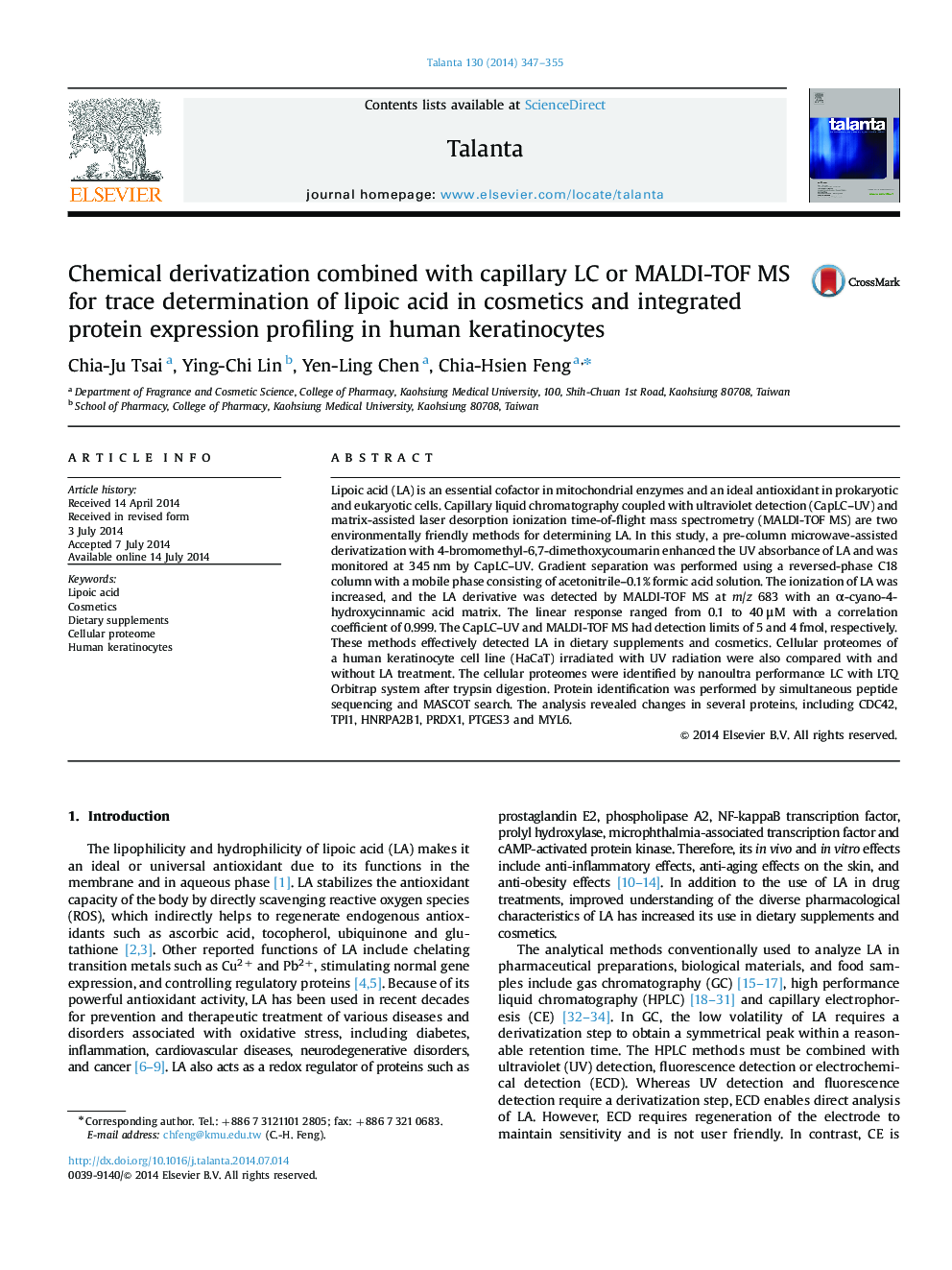| کد مقاله | کد نشریه | سال انتشار | مقاله انگلیسی | نسخه تمام متن |
|---|---|---|---|---|
| 1243601 | 1495805 | 2014 | 9 صفحه PDF | دانلود رایگان |

• Microwave-assisted derivatization was used to enhance lipoic acid (LA) sensitivity.
• The CapLC–UV and MALDI-TOF MS methods were validated for use in quality control.
• NanoUPLC–MS/MS was used to identify protein expression profiles of HaCaT cell.
• Six proteins were up-regulated by UV irradiation but down-regulated in LA treatment.
Lipoic acid (LA) is an essential cofactor in mitochondrial enzymes and an ideal antioxidant in prokaryotic and eukaryotic cells. Capillary liquid chromatography coupled with ultraviolet detection (CapLC–UV) and matrix-assisted laser desorption ionization time-of-flight mass spectrometry (MALDI-TOF MS) are two environmentally friendly methods for determining LA. In this study, a pre-column microwave-assisted derivatization with 4-bromomethyl-6,7-dimethoxycoumarin enhanced the UV absorbance of LA and was monitored at 345 nm by CapLC–UV. Gradient separation was performed using a reversed-phase C18 column with a mobile phase consisting of acetonitrile–0.1% formic acid solution. The ionization of LA was increased, and the LA derivative was detected by MALDI-TOF MS at m/z 683 with an α-cyano-4-hydroxycinnamic acid matrix. The linear response ranged from 0.1 to 40 μM with a correlation coefficient of 0.999. The CapLC–UV and MALDI-TOF MS had detection limits of 5 and 4 fmol, respectively. These methods effectively detected LA in dietary supplements and cosmetics. Cellular proteomes of a human keratinocyte cell line (HaCaT) irradiated with UV radiation were also compared with and without LA treatment. The cellular proteomes were identified by nanoultra performance LC with LTQ Orbitrap system after trypsin digestion. Protein identification was performed by simultaneous peptide sequencing and MASCOT search. The analysis revealed changes in several proteins, including CDC42, TPI1, HNRPA2B1, PRDX1, PTGES3 and MYL6.
Figure optionsDownload as PowerPoint slide
Journal: Talanta - Volume 130, 1 December 2014, Pages 347–355